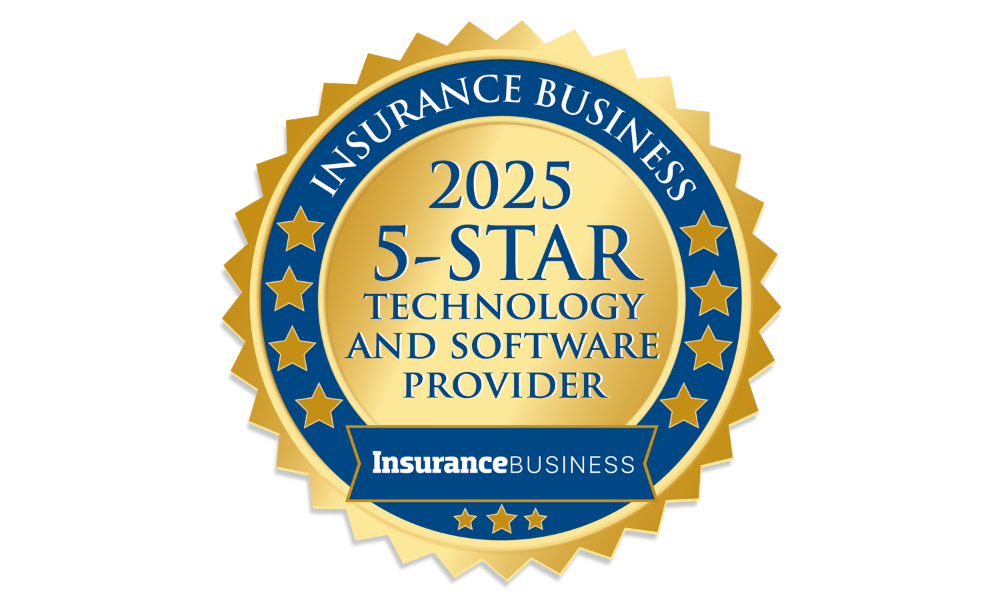Commentary/Opinion

Insurance entering an era of ‘polycrisis’
Insurers need to adapt and evolve to survive the ‘polycrisis,’ according to a panel of experts at Send’s recent INFUSE webinar.
A polycrisis is the simultaneous occurrence of multiple, interconnected crises, from climate change and geopolitical volatility to supply chain shocks and economic disruption. In a polycrisis, the overall impact becomes greater than the sum of the individual crises’ effects, because the crises are interacting and amplifying each other.
In a polycrisis environment, risk is more complex, making it increasingly challenging for insurers to perform adequate assessments and set rates. Risks are no longer isolated; instead, they all relate to one another.
There are second and third order effects, unintended as well as intended consequences,” said panelist Neal Croft, a global client relationship and strategy lead. “You have to look across the system and not just at things in isolation.”
Panelists said today’s communication speeds and the immense volume of news and data also complicate the situation, making it difficult to separate meaningful information from the rest.
“Weeding out noise is the key,” said Dean LaPierre, chief underwriting officer at Cross Cover Insurance. “Focusing in on the noise to signal ratio, what is the data we can actually use to make good decisions?”
Panelists agreed that innovation is the solution to navigating these new complexities. Ina Bajrami, financial risk manager at Apollo, pointed to parametric insurance and real-time tracking of assets as good examples of industry evolution.
“Innovation needs to become part of underwriting culture,” she said. “That means identifying blind spots, encouraging new ideas and evolving how we look at risk.”
News

Nationwide to Acquire Reinsurance Renewal Rights from Markel Insurance
Nationwide, a Fortune 100 company and one of the largest providers of insurance and financial services products in the U.S., announced today that it has entered into a definitive agreement to acquire the renewal rights for the reinsurance business of Markel Insurance, part of Markel Group Inc. (NYSE: MKL). The transaction is expected to close in August 2025, subject to customary closing conditions.
Nationwide plans to delegate the underwriting and management of all renewal policy opportunities included in this transaction – currently $1.2 billion in premium – to Ryan Re Underwriting Managers, a reinsurance managing general underwriter of Ryan Specialty (NYSE: RYAN), expanding the strategic alliance between Nationwide and Ryan Specialty established in 2019.
"By working with two respected names in the industry, this strategic acquisition reinforces Nationwide’s position as a diversified risk partner and creates an opportunity for us to expand our reinsurance footprint,” said Nationwide CEO Kirt Walker. “Nationwide’s collaboration with Ryan Specialty, and Ryan Re in particular, has positioned us to increase our presence in the specialty reinsurance market. This strategic move accelerates this progress, and we’re excited about the diverse portfolio it unlocks.”
“We are confident in our ability to meet the protection needs of Markel’s clients and deliver long-term value to broker partners,” said Mark Berven, President of Property & Casualty at Nationwide. “Our partnership brings the scale, reach and specialized capabilities to offer these clients a broad suite of products, including specialty lines that enhance their options in meaningful ways.”
Research

Aon reports expanding insurance capacity amid rising global risks
Aon, a global insurance and reinsurance broker, has released its Q2 2025 Global Insurance Market Insights, highlighting a notable phase in the insurance market where increased capacity and softening rates are coinciding with intensifying systemic threats.
According to Aon, market conditions in the second quarter were broadly favourable for buyers, with greater availability of cover, more flexible terms, and competitive pricing across many lines.
However, Aon warns that these benefits may be short-lived. Underlying loss trends in US casualty, property, and cyber remain concerning, and with only limited new capital entering the traditional re/insurance market, any major event could prompt a swift change in appetite.
InsurTech/M&A/Finance💰/Collaboration

Verisk Signs Definitive Agreement to Acquire AccuLynx | Verisk
Verisk (Nasdaq: VRSK), a leading global data analytics and technology provider to the global insurance industry, has entered into a definitive agreement to acquire AccuLynx for $2.35 billion in cash to augment its network capabilities across the insurance claims and restoration ecosystem. AccuLynx is the leading SaaS platform providing end-to-end business management workflow for residential property contractors with expertise in roofing.
The acquisition is expected to be additive to Verisk’s revenue growth and adjusted EBITDA margin, and accretive to adjusted EPS by year end 2026. Strategic Rationale: Delivering Added Value to the Insurance Claims and Restoration Ecosystem
Expanding Connectivity in the Industry: Verisk and AccuLynx both play key roles within the insurance claims and restoration industry, and this acquisition will streamline workflow and enhance interactions between participants, extending the benefits to all in the network.
“AccuLynx is a natural fit and extension of the solutions we provide insurance carriers, adjustors and contractors through our Property Estimating Solutions business,” said Lee Shavel, president and CEO, Verisk. “Together we have an incredible opportunity to enhance the network effect of these businesses and create significant value for all parties in the insurance claims and restoration ecosystem, from insurers to contractors and policyholders.”
Financial Results

Markel Group reports 2025 second quarter and six-months results
Markel Group Inc. (NYSE:MKL) today reported its financial results for the second quarter of 2025. The Company also announced today it filed its Form 10-Q for the quarter ended June 30, 2025 with the Securities and Exchange Commission.
"We've made meaningful changes across our business in recent years, all with the goal of consistently compounding your capital," said Tom Gayner, Chief Executive Officer of Markel Group. "Our results included $1.4 billion in operating income through the first half of the year. Also, this quarter, we took another step to simplify the structure of our insurance business by placing reinsurance into run-off. That decision enables the team to focus more clearly on the core underwriting activities where we have distinct strengths."
The following table presents the Company's summary financial data, by engine, for the quarters and six months ended June 30, 2025 and 2024.
- Net investment income increased 3% and 6% for the quarter and six months ended June 30, 2025, respectively, reflecting a higher yield and higher average holdings of fixed maturity securities in 2025.

Insurance stocks outperform as investors pile on
Stocks get boost from Wall Street banks as trade risks linger.
While the broader financial sector has cooled, Wall Street traders continue to invest in insurance stocks as property and casualty insurers ride a wave of better underwriting, premium growth and high interest rates.
Over the last 12 months, the insurance industry is up nearly 22%, beating the S&P 500. Meanwhile, premiums coming in crossed the $1 trillion mark for the first time. Reserves have also been managed tightly and investment income is improving with existing rates.
“It's one of the few sectors where the outlook is clear, and property and casualty carriers are holding up well because the fundamentals are stronger than they’ve been in years,” said Trevor Saliba, CEO of NMS Capital Group.
“Underwriting’s tightened, the pricing environment is still rational and carriers are being smarter about risk,” he added. “On the reinsurance side, capacity hasn’t flooded back in the way some expected, so we’re seeing firm conditions stick, particularly after this year’s cat events.”
Year-to-date, insurance names like Root and Heritage are up big—after the stocks skyrocketed nearly 150% and 90% respectively the last 12 months. Other big winners in 2025 include American International Group with a rough 51% spike since January, Berkshire Hathaway near 23% and Travelers Companies around 21%.
Meanwhile, industry mainstay Allstate is up roughly 0.14% year-to-date after catastrophe losses and competitive pricing helped shape deal activity and valuations.
“We're looking at around $90 billion in insured losses, which makes it the second-highest first half on record,” said Saliba.
Predict & Prevent
Triple-I Blog | IoT Solutions Offer Homeowners, Insurers Value — But How Much?
As property/casualty insurers increase their focus on predicting and preventing costly damage that drives up claims and premiums, telematics technology has come to play an increasing role. From video doorbells that reduce theft and vandalism to “smart plumbing” solutions that detect leaks and shut off water before in-home flooding can occur, these technologies clearly offer value to homeowners and insurers.
But how much value?
Whisker Labs – maker of the Ting home fire prevention solution – has taken on the challenge of quantifying its product’s efficacy and return on investment. In a research partnership with Octagram Analytics for independent data analysis and modeling and Triple-I for its insurance industry expertise and insight, Whisker Labs found that Ting reduced fire claims within the study sample by an estimated 63 percent, resulting in 0.39 fewer electrical fire claims per 1,000 home years of experience, in the third year after installation. This translates into a fire claims reduction benefit of $81 per customer.
“This study provides concrete evidence of the value that telematics technology can deliver,” said Patrick Schmid, chief insurance officer at Triple-I. “While IoT solutions are gaining traction with many success stories, rigorous analysis of claims reduction has been harder to find until now. This analysis clearly shows Ting reduces claims and provides a positive return on investment for insurers.”
The research can be read here
Today

Car insurance: The powerhouse of US property & casualty
For over a decade, automobile insurance has reigned supreme in the US property and casualty (P&C) market - and its dominance shows no signs of fading.
A decade on top
In 2024, car insurance claimed 41.6 % of the P&C market - solidly ahead of property coverage (35.7%) and liability insurance (19.5%). In raw premiums, private-passenger auto insurance brought in an impressive $344 billion by March 3, 2025—nearly 35% of all written premiums.
Why cars continue to rule
- Mandatory protection: Most US states require auto insurance - creating unparalleled, built-in demand.
- Sheer scale: With millions of vehicles on the road, auto coverage naturally dominates P&C revenue streams.
- High engagement: Frequent renewals and high claim volumes keep this line vibrant.
- Bundling-friendly: Insurers often tie auto to home and other lines - boosting customer retention and profit. Premiums, tariffs & market shifts
Rising repair costs and recently imposed tariffs on imported autos and parts are expected to increase claim expenses - likely pushing premiums higher. And for states with no-fault systems (like Michigan), regulatory changes are reshaping coverage demand, prompting insurers to pivot and educate clients on evolving policy needs.
Regulations
NAIC proposes evaluation tool for AI systems used by insurers
On July 7th, the NAIC’s Big Data and AI Working Group (Working Group) exposed a draft of an AI Systems Evaluation Tool (Evaluation Tool). The stated purpose is to provide regulators with a tool that enables them to identify and assess the AI-related risks of an insurer on an on-going basis with a scope that considers both financial and consumer risks.
The Evaluation Tool is intended to supplement existing market conduct, product review, form filing, financial analysis, and financial examination review procedures to allow regulators to determine the extent of AI systems usage by an insurer and whether additional analysis is needed. An extended comment period was announced on July 28th, with interested parties now able to provide comments through September 5th. Initial takeaways from the exposed draft include:
- The Evaluation Tool assesses a wide range of potential sources of financial, financial reporting and consumer risks resulting from AI systems, demonstrating a more expansive scope than the primary focus on adverse consumer outcomes in the NAIC’s Model Bulletin on the Use of AI Systems by Insurers (Model Bulletin).
- The tailorable templates, charts, and checklists included in the exhibits to the Evaluation Tool allow for regulator discretion and customization to request and review quantitative and qualitative information about the insurer’s AI inventory, governance and risk management practices. MORE
Cyber Risk

Insurtech: DynaRisk Raises $4.7 Million | Crowdfund Insider
London-based DynaRisk has raised $4.7 million in a funding round led by YFM Equity Partners. DynaRisk is a “cyber intelligence SaaS provider” supporting insurers to identify, monitor, and reduce policyholder cyber risk
Founded in 2016, the company was created by CEO Andrew Martin, who is said to have recognised that the insurance industry needed more tools to help them tap the fast-growing cyber insurance and cyber assistance market.
The new money is expected to help DynaRisk expand its operations across EMEA, North America, and Asia-Pacific.
Martin says that Brokers, MGAs and (re)insurers are rushing to tap the fast growing cyber insurance as it is one of the most pressing challenges for consumers and SMEs globally.
“While working with global banks, I saw how larger corporations were using expensive and complex enterprise-level software and services and wanted to put these in the hands of more people.
DynaRisk works by embedding its cyber‑risk solutions into insurance offerings, with its software providing vulnerability scanning, dark web monitoring, cybersecurity scores, training and education, and tailored remediation guidance.
DynaRisk reports that it currently supports more than 25 insurance customers worldwide, covering approximately 2.4 million consumers and 800,000 SMEs.
Awards

Top Insurtech Companies | Global 5-Star Technology and Software Providers
[Ed note: this is a follow up, must read report from the announcement directly below in the next article]
The top insurtech companies across the globe transforming legacy systems into launchpads for AI, automation, and improved customer experiences
Beyond the buzz: turning promise into results The AI explosion has ramped up the pressure on the world’s top insurtechs to deliver and push the boundaries even further. The companies meeting these exacting demands are recognized by Insurance Business as the 5-Star Technology and Software Providers 2025 and were determined after the global broking network nominated and ranked their standout performers.
Their solutions drive business value, from faster claims processing to smarter underwriting, enable digital distribution models, and provide insurer-specific understanding, while introducing AI where it is most effective.
“Although AI is essentially new to insurance, boards and C-suites have high expectations to take the lead,” says Alan Demers, president of InsurTech Consulting. “Those expectations are buoyed with caution for the possibilities of what could go wrong. It’s a true mix of fear and exciting opportunities.” Proving the point, more than 60 percent of all insurtech deals in early 2025 involved AI, reflecting its rapid rise in underwriting, claims, customer service, and risk modeling, according to the Q1 2025 Global InsurTech Report. SEE WINNERS

Revealed – the insurance industry's 5-star technology and service providers of 2025
Technology has arguably never been in the headlines as much as it has in recent weeks and months as companies globally embrace generative AI, customisation and seek out ways to boost their processes. The insurance industry has been no exception.
Step forward then, this year’s global 5-star technology and service providers – an elite list of the very best the sector has to offer.
How were the 5-star technology and service providers determined?
To select the insurance industry’s best technology providers of 2025, Insurance Business enlisted the help of some of the sector’s top experts on the back of a survey of its global readership.
During a 15-week process, IB’s research team conducted interviews with brokers and surveyed thousands more within its network to understand what the sector wants and needs from tech offerings. Tech providers, meanwhile, were asked to nominate their own solutions, explaining the features that make them stand out in a competitive market.
Podcast Sponsor

Audio Version - 'Connected: The Podcast' --- Sponsored by Pulse Podcasts
The ‘Connected’ Podcast by Alan Demers and Stephen Applebaum, is a condensed audio version of the day's ‘Connected' newsletter, a daily scan of all the happenings in the world of Insurance & InsurTech News.
Pulse Podcasts: Introduce a new way for your audience to hear your voice! We are a podcast creation service that helps businesses turn their written content, like blog posts and news articles, into beautiful podcasts. Our platform writes the script, records the voices, and mixes the audio to create engaging content for your audience. It's affordable and has super-fast turnaround!
LISTEN AND SUBSCRIBE BELOW
